link to page 1 link to page 2 link to page 2 link to page 2 link to page 3 link to page 3 link to page 3 link to page 4 link to page 4 link to page 4 link to page 4 link to page 4 link to page 4 link to page 5 link to page 5 link to page 5 link to page 5 link to page 6 link to page 6







 If printed, this document is only valid for the day of printing.
If printed, this document is only valid for the day of printing.
Observation & Monitoring in Adult Emergency Department (AED)
and Clinical Decision Unit (CDU)
Unique Identifier
PP2005/RBP/041 - v02.00
Document Type
Guideline
Risk of non-compliance
may result in significant harm to the patient/DHB
Function
Clinical Practice, Patient Care
User Group(s)
Auckland DHB only
Organisation(s)
Auckland District Health Board
Directorate(s)
Adult Medical Services
Department(s)
Adult Emergency Department (AED) and Clinical Decision Unit
(CDU)
Used for which patients? All AED and CDU patients
Used by which staff?
All clinicians in AED and nurses in CDU
Excluded
Keywords
early warning score (EWS), abnormal physiology, vital signs
Author
Clinical Charge Nurse - AED/CDU
Authorisation
Owner
Service Clinical Director - AED/CDU
Delegate / Issuer
Nurse Unit Manager - AED/CDU
Edited by
Document Control
First issued
May 2016
This version issued
22 April 2021 - updated
Review frequency
3 yearly
Contents
1. Purpose of guideline ..................................................................................................................... 2
2. Guideline management principles and goals ............................................................................... 2
3. Definitions ..................................................................................................................................... 2
Abnormal physiology ............................................................................................................. 3
4. Resuscitation process ................................................................................................................... 3
5. A patient that is cardiac monitored (excluding a resuscitation patient) ...................................... 3
6. An acute patient ........................................................................................................................... 4
A patient with a head injury .................................................................................................. 4
A patient with abdominal pain .............................................................................................. 4
A patient with a respiratory condition .................................................................................. 4
A patient with no definitive diagnosis ................................................................................... 4
A toxicology patient............................................................................................................... 4
7. A patient in the waiting room or ambulatory care ....................................................................... 5
8. Transferring a patient ................................................................................................................... 5
9. Supporting evidence ..................................................................................................................... 5
10. Associated documents .................................................................................................................. 5
11. Disclaimer ..................................................................................................................................... 6
12. Corrections and amendments ...................................................................................................... 6
Back to Contents
Observation-and-Monitoring-in-AED-CDU_2021-04-22.docx
Page 1 of 6
link to page 1 link to page 5

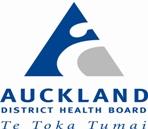 If printed, this document is only valid for the day of printing.
If printed, this document is only valid for the day of printing.
1. Purpose of guideline
The purpose of this guideline is to facilitate the safe and effective care of a patient, through
appropriate vital sign recordings, in the Adult Emergency Department (AED) and Clinical Decision
Unit (CDU) within Auckland District Health Board (Auckland DHB).
2. Guideline management principles and goals
Recording of a patient’s vital signs in the AED and CDU requires critical thinking and excellent
clinical practice. The types of vital signs taken in the AED and CDU are determined by the
patient’s presentation. Both the patients’ early warning score (EWS) and critical thinking should
drive the increase and frequency of vital signs. If any doubt or concerns arise around a patient’s
vital signs, action to be taken as per EWS mandatory escalation pathway. Medico-legal
documentation must be completed on every occasion, initially on the Admission to Discharge
planner (CR9074) part A assessment then transcribed over to the Adult vital signs chart (CR5826)
and EWS totalled. The totalled EWS score is to be updated following each set of vital signs on the
CHiPS whiteboard under the EWS column. This guideline does not supersede the monitoring
requirements during the following situations (see
Associated documents). Blood product administration
Administration of opioids
Patient controlled intravenous analgesia (PCIA) administration.
3. Definitions
Term
Definition
BP
Blood pressure
BSL
Blood sugar level - expected in some presentations
CCN
Clinical Charge Nurse
CHiPS
An integrated content management system (CMS)
CRM
Cardiac rhythm monitoring
EtCO2
End tidal carbon dioxide
EWS
Early warning score
HR
Heart rate
MEWS
Maternity early warning score
Pain score
A numerical scale 0 = no pain through to 10 being the worst pain
RR
Respiratory rate
SMO
Senior Medical Officer
SpO2
Oxygen saturation
Vital sign recordings
For the purpose of this guideline include the recordings of
Neurological observations, measuring Glasgow Coma Scale (GCS),
including pupils and limb movement and strength
Back to Contents
Observation-and-Monitoring-in-AED-CDU_2021-04-22.docx
Page 2 of 6
link to page 1

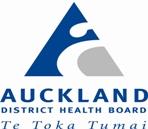
 If printed, this document is only valid for the day of printing.
If printed, this document is only valid for the day of printing.
Abnormal physiology
This table describes the recommended process for managing a patient with abnormal physiology.
Staff members involved
Action
Nursing
Repeat observations as per EWS or MEWS escalation policy
and in accordance with the vital sign guidelines found in the
following sections of this document.
Inform doctor and CCN as soon as possible.
In CDU nurse should inform admitting Registrar and CCN as
soon as possible and consider calling code red or blue.
Consider moving to a monitored bed space or if in AED to
resuscitation consider calling a 777 medical or surgical
emergency.
Medical
Review the patient as per EWS or MEWS escalation policy and
below vital sign guidelines according to presentation.
Start basic resuscitation if not already in place.
Consider moving to resuscitation (if in AED) or cardiac rhythm
monitoring areas.
Attend to the potential underlying cause.
Discuss with SMO (24-hours) if diagnosis unclear.
If no improvement or deterioration with initial treatment, no
clear plan for further management within one hour of initial
review:
○ If the patient is in AED ask for AED senior doctor review or
consider calling 777 medical or surgical emergency;
○ If the patient is in in CDU consider calling a 777 code red or
blue.
Record definitive plan and relevant referrals (time and date
and who)
4. Resuscitation process
A resuscitation patient must have baseline recordings: temperature (T), blood pressure (BP), heart
rate (HR), respiratory rate (RR), oxygen saturation (SpO2), End-tidal carbon dioxide (ETCo2) (if in
use), pain score, blood sugar level (BSL), Glasgow Coma Scale (GCS) neurological observations and
be placed on cardiac monitoring. Recordings must be repeated initially every 5-15 minutes in the
first 30-60minutes to identify a trend, then every 15-30 minutes only if the clinical condition
dictates.
5. A patient that is cardiac monitored (excluding a resuscitation patient)
A cardiac monitored patient must have baseline recordings: T, BP, HR, RR, SpO2, pain score,
neurological observations and placed on cardiac monitoring. Recordings are to be repeated
initially every 15 minutes in the first 30 minutes to identify a trend then half hourly as the patient’s
condition dictates.
Back to Contents
Observation-and-Monitoring-in-AED-CDU_2021-04-22.docx
Page 3 of 6
link to page 1 link to page 5

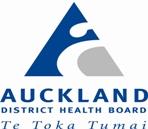




 If printed, this document is only valid for the day of printing.
If printed, this document is only valid for the day of printing.
6. An acute patient
An acute patient must have baseline recordings: T, HR, BP, RR, SpO2, pain score, including a full set
of neurological observations. An expectation would be at least every one to two hourly initially
until a differential diagnosis is established or as EWS escalation action points dictate.
A patient with a head injury
A head injured patient must have baseline recordings as follows:
Temperature, HR, BP, RR, SpO2, pain score and a full set of neurological observations including
pupil size and reactivity.
Those who have had a loss of consciousness (LOC) or who are showing clinical signs of a head
injury (irritability, disorientation, lower GCS), must have vital signs as above, including
neurological observations, repeated every 30 minutes for four hours, then every one to two
hourly thereafter, or as condition dictates.
Abbreviated Westmead’s Post-traumatic Amnesia Scale (WPTAS) scoring must be commenced
if GCS 13-15/15 or <24hrs from injury. If ethanol alcohol (ETOH) is a component, the WPTAS
scoring must be commenced only if the patient’s level of social interaction allows.
Those who are fully alert and orientated without having had a loss of consciousness, must have
recordings repeated every one hour, including neurological observations after the baseline
recordings, after which an expectation of at least two hourly would be maintained depending
on clinical findings and discussion with senior nurse or doctor.
A patient with abdominal pain
A patient with abdominal pain must have baseline recordings: T, HR, BP, RR, SpO2, pain score
including an initial set of neurological observations and BSL. Vital signs must be repeated at least
two hourly in the acute phase until diagnosis or as EWS escalation action points dictate. It is
essential to record vital signs at time of discharge.
A patient with a respiratory condition
A patient with a respiratory condition must have baseline recordings: T, HR, BP, RR, SpO2, pain
score and an initial set of neurological observations. An asthmatic must have a baseline peak
expiratory flow rate (PEFR) on admission and during treatment as per Asthma pathway – AED (see
Associated documents). Vital sign recordings should be repeated half-hourly to one hourly or as
EWS dictates, with a minimum of two hourly until admission or discharge.
A patient with no definitive diagnosis
A patient with no definitive diagnosis must have baseline recordings T, HR, BP, RR, SpO2,
neurological observations, BSL and pain score. Repeat observations are expected at least two
hourly or as EWS dictates until definitive diagnosis. Continuation of and frequency must be
determined by patient improvement or deterioration.
A toxicology patient
A toxicology patient must have baseline recordings: T, HR, BP, RR, SpO2, pain score, a
full set of neurological observations including BSL and electrocardiogram (ECG). Recordings must
be one to two hourly until unknown pharmacological factors are identified and are managed.
Back to Contents
Observation-and-Monitoring-in-AED-CDU_2021-04-22.docx
Page 4 of 6
link to page 1 link to page 5

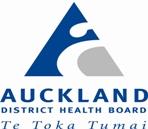 If printed, this document is only valid for the day of printing.
If printed, this document is only valid for the day of printing.
Refer QT Prolongation Monitoring and Management – Adult Emergency Department for further
information regarding an overdose or supratherapeutic ingestion of a medication that has the
potential to prolong the QT interval (s
ee Associated documents).
7. A patient in the waiting room or ambulatory care
A patient triaged to the waiting room or ambulatory care can be emerging unwell and it is
imperative that a waiting room and ambulatory patient has at the least one full set of initial
baseline recordings: BP, HR, RR, T, SpO2, pain score and GCS. Except for obvious minor injuries and
complaints, a patient can become unwell while in the waiting room, and therefore it is important
to be aware that waiting room and ambulatory care patients require their vital signs re-recorded
at varying intervals but no longer than two to four hourly or within one hour of discharge.
8. Transferring a patient
Prior to transfer to a ward, theatre, other DHB or area, a minimum of one set of observations must
be recorded on the Adult vital signs chart (CR5826) and appropriate action taken before the
patient leaves AED/CDU. If the EWS score is six or greater, the patient must have a medical review
or discussion and appropriate action taken as per EWS action points and a plan in place for the
receiving area.
Note: It is important and expected that EVERY patient has their vital signs recorded at the time
of or within one hour of discharge. Only those with minor injuries are exempt.
9. Supporting evidence
Hosking, J., Considine, J., & Sands, N. (2014). Recognising clinical deterioration in emergency
department patients. Australasian emergency nursing journal, 17(2), 59-67.
Australasian College for Emergency Medicine (ACEM) (2000). Guidelines on the
implementation of the Australasian Triage Scale in Emergency Departments. Retrieved January
16, 2020: https://acem.org.au/getmedia/51dc74f7-9ff0-42ce-872a-
0437f3db640a/G24_04_Guidelines_on_Implementation_of_ATS_Jul-16.aspx
10. Associated documents
Asthma Pathway – AED Nurse Initiated
Blood Product Administration in Adults & Children
Blood Products and Blood Components Administration
Observation & Monitoring of an Adult
Opioid Index Guideline - Adult
Pain – Opioids – Intravenous in Adults
Patient Controlled Intravenous Analgesia (PCIA) – Adult
QT Prolongation Monitoring and Management – Adult Emergency Department
Back to Contents
Observation-and-Monitoring-in-AED-CDU_2021-04-22.docx
Page 5 of 6
link to page 1

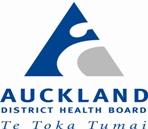 If printed, this document is only valid for the day of printing.
If printed, this document is only valid for the day of printing.
Clinical Forms
CR5468: Pressure Injury Needs Assessment and Care Plan
CR5825: Maternity Vital Signs Chart (MEWS)
CR9074: Admission to Discharge planner part A
CR9077: Admission to Discharge Planner Part B
CR5826: Adult vital signs chart
11. Disclaimer
No guideline can cover all variations required for specific circumstances. It is the responsibility of
the health care practitioners using this Auckland DHB guideline to adapt it for safe use within their
own institution, recognise the need for specialist help, and call for it without delay, when an
individual patient falls outside of the boundaries of this guideline.
12. Corrections and amendments
The next scheduled review of this document is as per the document classification table (page 1).
However, if the reader notices any errors or believes that the document should be reviewed
before the scheduled date, they should contact the owner or
Document Control without delay.
Back to Contents
Observation-and-Monitoring-in-AED-CDU_2021-04-22.docx
Page 6 of 6
























